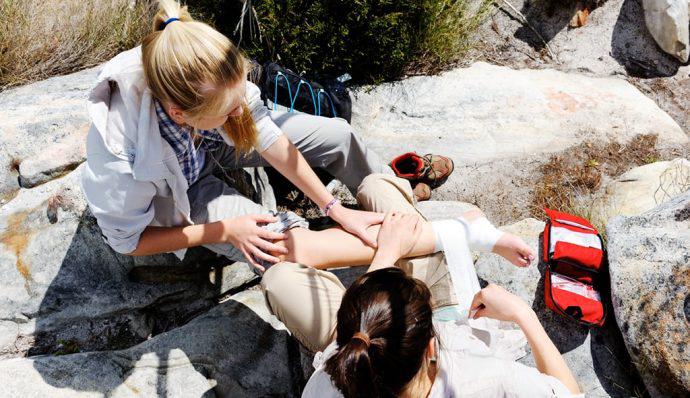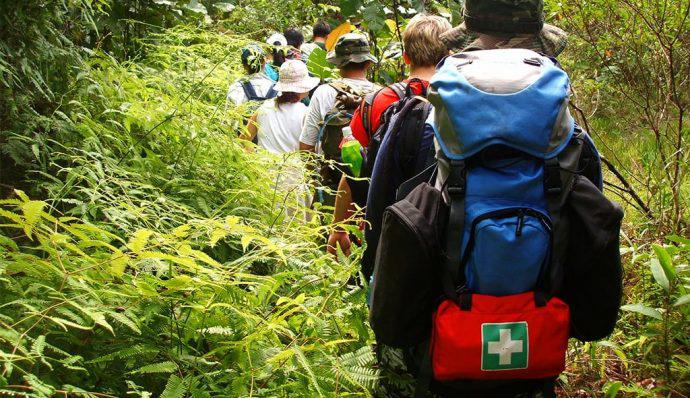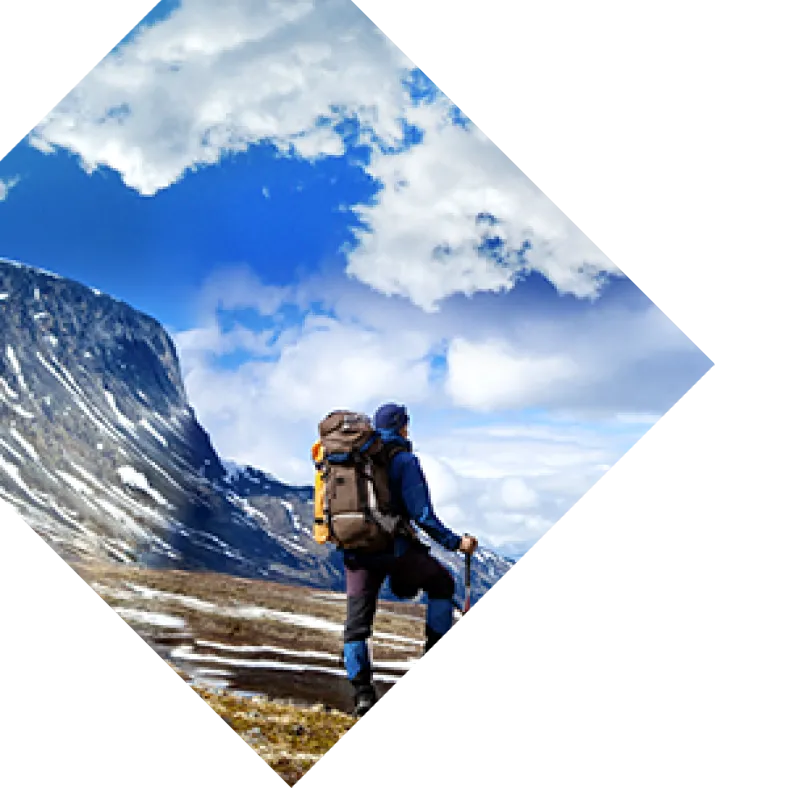If you’re headed into the wilderness, one of the first things you should triple-check is that you are carrying a hiking first aid kit. After all, this is one of the Ten Essentials, and you wouldn’t ever head outdoors without carrying your 10 items, right?! When it comes to a backpacking first aid kit, you have a few choices. If you are looking for the simple route, you can pop over to your local outdoor goods store and purchase a pre-packaged personal first aid kit. One of the more popular basic first aid kit brands is Adventure Medical Kits. These pre-packaged kits have all of the essentials, and if you don’t have the time or interest in assembling your own, these area great place to start. However, you will likely need to supplement a pre-packaged kit with specific items that are essential to you and your needs. Perhaps you have allergies and know you need to carry an Epi-pen? Obviously, this needs to be included in your medical kit, but a standard first aid kit would not include this item. Because of this, you may opt to create your own medical kit from the beginning. This can be ideal for many outdoorists since they can pick and choose the exact items they want to include in the kit. Plus, since you put the effort into preparing the kit, you are familiar with each item. Should the need arise, you will already understand each personal care item that you are carrying. That said, how do you decide what should go into your wilderness first aid kit? First of all, let’s start with the essentials. If you are looking at a bare-bones, pared-down first aid kit, begin with this structure.
First Aid Basic Care

Essential Items
- Antiseptic wipes
- Antibacterial ointment
- Assorted bandages
- Gauze pads in various sizes
- Medical tape
- Moleskin or another type of blister treatment
- Ibuprofen (or another preferred pain-relief medication)
- Insect sting treatment
- Antihistamine for allergic reactions
- Non-stick pads
- Butterfly bandages
- Tweezers
- Safety pins
- Multitool
- First-aid cards that include instructions on how to use the items if you are not familiar
You will likely want to add to your kit as you become more familiar with your outdoor pursuits. For example, if you are packing the primary first aid kit that will be used for a group of people on a multi-night trip, you would want to pack a thorough kit that could cover the essentials for everyone. In addition to the above items, consider packing the following list.
Comprehensive First Aid Kit
Wraps, Splints and Wound Coverings
- Finger splint
- SAM splint
- Rolled gauze
- Elastic wrap
- Cleansing pads
- Blood-stopping gauze
- Liquid bandage
- Triangular bandage
Medications/Treatments
- Hand sanitizer
- Aspirin and ibuprofen
- Eye drops
- Anti-diarrheal pills
- Poison ivy / poison oak treatment
- Insect sting treatment
- Rehydration salts
- Prescription medications (e.g., antibiotics)
Tools/Supplies
- Multi tool (or a pocket knife)
- Cottons swabs
- Thermometer
- Irrigation syringe
- Blunt-tipped scissors
- Small mirror
- Surgical gloves
- Pliers (may be included in multitool)
- Sewing needle
- CPR mask
- Duct tape
- Small notebook with pen (to record vitals, etc.)
- Waterproof packaging to carry kit
- Headlamp (or flashlight)
- Whistle
- Heat-reflecting emergency blanket
- Personal locator beacon (optional)
Personal Items
- Sunscreen
- Lip balm
- Bug spray
- Feminine hygiene products
It’s an extensive list and I realize it looks like a lot of items to carry. However, consider the possibilities for what could happen on a multi-night trip with a group of four people. Besides, if you split the above items between all four of you, the extra pack weight truly is not terrible. Of course, evaluate each item and leave it behind if it does not make sense for your trip. If you’re backpacking through the high alpine in the Rockies, chances are very good that you won’t be seeing any poison oak, so you can leave that pain relief treatment at home.
Ultralight Backpacking
 Ultralight backpacking can be a controversial topic since many traditional backpackers think carrying fewer items is risky with a better chance of needing outside assistance. Ultralight backpacking in the United States is defined by a base pack weight of 10 pounds or less (base pack weight = rain shelter/tent, sleeping system, and backpack). Clearly, an ultralight aficionado is not going to carry a five-pound first aid kit! This is a personal choice. Either way, if you prefer to go the ultralight route, it is still a good idea to carry a first aid kit with you. But what do you eliminate from the above list? First of all, note that any tubes of ointment can be dialed down. You may not need to carry a full tube, and instead, can carry a half tube to save weight. Additionally, pack enough ibuprofen tablets for your trip instead of carrying the entire bottle. Small weight savings like this will go a long way. Here is a sample ultralight backpacking first aid kit packing list:
Ultralight backpacking can be a controversial topic since many traditional backpackers think carrying fewer items is risky with a better chance of needing outside assistance. Ultralight backpacking in the United States is defined by a base pack weight of 10 pounds or less (base pack weight = rain shelter/tent, sleeping system, and backpack). Clearly, an ultralight aficionado is not going to carry a five-pound first aid kit! This is a personal choice. Either way, if you prefer to go the ultralight route, it is still a good idea to carry a first aid kit with you. But what do you eliminate from the above list? First of all, note that any tubes of ointment can be dialed down. You may not need to carry a full tube, and instead, can carry a half tube to save weight. Additionally, pack enough ibuprofen tablets for your trip instead of carrying the entire bottle. Small weight savings like this will go a long way. Here is a sample ultralight backpacking first aid kit packing list:
- 4 adhesive bandages
- ½ roll medical tape
- ½-ounce tube of antibiotic treatment
- 3 small packages of pills: ibuprofen, Benadryl, and an antidiarrheal
- 2-3 antiseptic wipes
- 2-3 butterfly bandages
- Tweezers
- Safety pins
- One sheet of moleskin
- Water treatment tablets
- Latex gloves
Or, you can once again defer to Adventure Medical Kits and check out their ultralight series for a pre-packaged medical kit. Related: Hiking Tips For Beginners





